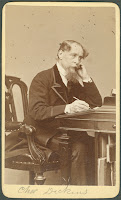
A common practice during World War II was the dropping of surrender leaflets on military troops and civilians on both sides of the conflict. By the time the Americans entered the war in 1941, the practice was already well established albeit with questionable success. The allied leaflets that were in use had no uniformity. They were of different color and size and had varying surrender instructions. Under the supervision of the United States, the Allies not only standardized the leaflets but used all their psychological warfare resources to design a "Passierschein" that was eminently more successful. For example, it was assumed that Germans would be more inclined to believe documents that looked official, so the Allies added the great seals of the United States and Great Britain, as well as Eisenhower's signature to the leaflet. The text urging Germans to surrender is in German and English. The text on the back, which quotes excerpts from the Haager Convention (1907) and from the Geneva Convention (1912) on the rights of prisoners of war, is in a font typically used by German authorities. According to an article by SGM Herbert A. Friedman (Ret.), this particular leaflet was dropped from September 1944 to March 1945.
Whereas the "Safe Conduct" leaflet leaves no doubt as to where it originated, a typical German surrender leaflet was more obscure in its origin. It is only upon reading that the source becomes clear. Delivery and execution of this type of "grey" propaganda fell to a special branch of Goebbels propaganda machine, the propaganda company (PK), whose purpose it was to disseminate positive but also misleading and false information, using the same psychological warfare methods as the allies.
 |
| German Produced "Surrender" Leaflet |
To take a look at these and other World War II propaganda materials ask for
MS-995 or
Broadside 001459.
 The elaborate and often arcane rules of etiquette in the nineteenth century demanded the proper use of calling cards when visiting or "calling on" an acquaintance. These cards were very like modern business cards and it was customary for a visitor to leave his or her card as a prelude to a visit. If they then received a card from the acquaintance, that meant that they were welcome to return. No return card was a message that a visit was discouraged - an early equivalent of temporarily un-friending someone. During the nineteenth century, the well mannered - and perhaps slightly vain - visitor might send in a carte de visite - a small, typically albumen type photograph measuring about 2 x 3.5 inches (the size of a standard calling card) mounted on thick paper, which often highlighted some important or characteristic aspect of the caller's life. This card shows actor Charles Fechter as Hamlet - a role he was famous for.
The elaborate and often arcane rules of etiquette in the nineteenth century demanded the proper use of calling cards when visiting or "calling on" an acquaintance. These cards were very like modern business cards and it was customary for a visitor to leave his or her card as a prelude to a visit. If they then received a card from the acquaintance, that meant that they were welcome to return. No return card was a message that a visit was discouraged - an early equivalent of temporarily un-friending someone. During the nineteenth century, the well mannered - and perhaps slightly vain - visitor might send in a carte de visite - a small, typically albumen type photograph measuring about 2 x 3.5 inches (the size of a standard calling card) mounted on thick paper, which often highlighted some important or characteristic aspect of the caller's life. This card shows actor Charles Fechter as Hamlet - a role he was famous for. 






